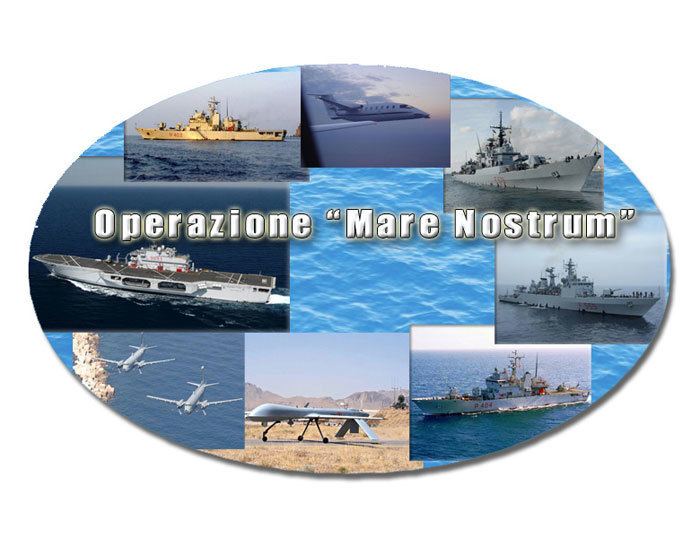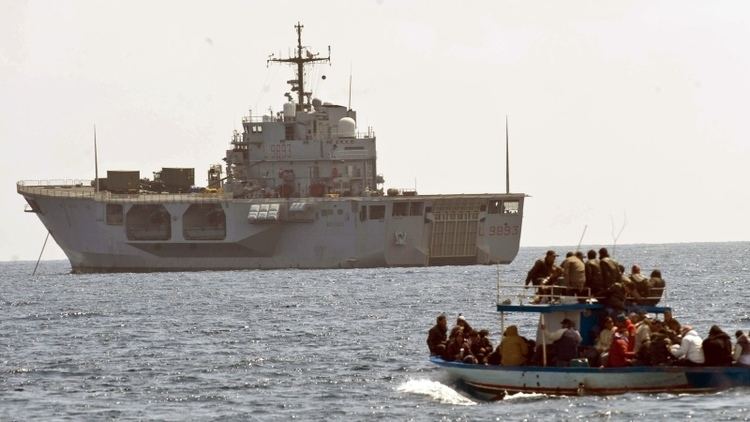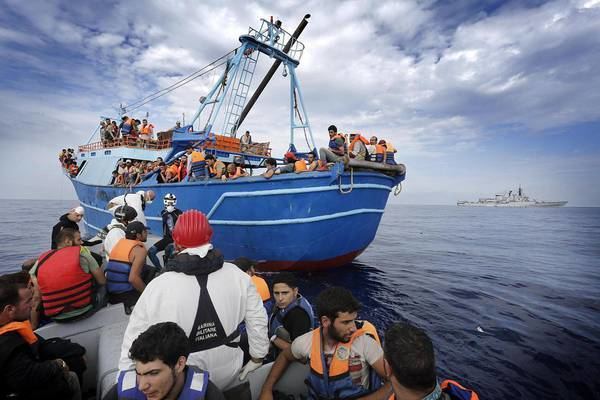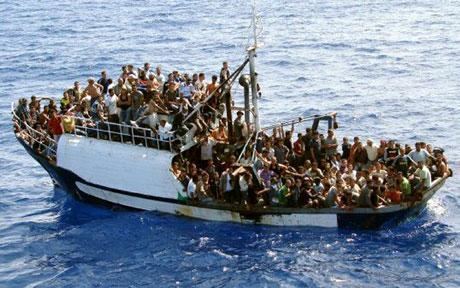Dates 18 Oct 2013 – 31 Oct 2014 | Location Strait of Sicily | |
 | ||
Operation Mare Nostrum was a year-long naval and air operation commenced by the Italian government on October 18, 2013 to tackle the increased immigration to Europe during the second half of 2013 and migratory ship wreckages off Lampedusa. During the operation at least 150,000 migrants, mainly from Africa and the Middle East, arrived safely to Europe. The operation ended on 31 October 2014 and was superseded by Frontex's Operation Triton.
Contents

Operation
The operation is named after ancient Roman name in Latin for the Mediterranean (Mare Nostrum, "Our Sea").

The European Commission provided financial support for the operation with €1.8 million from the External Borders Fund. Mare Nostrum was operated by the Italian Navy and saw ships operating near the coast of Libya.

The operation's search and rescue component is claimed by advocacy groups like the European Council on Refugees and Exiles to have saved thousands of lives, but the operation was politically unpopular and extremely costly for just one EU state. The Italian government had requested additional funds in order to continue the operation, from the other EU member states, but they did not offer the requested support.

The operation ended on 31 October 2014 and was superseded by Frontex's Operation Triton, which operates a smaller search and rescue capability. Unlike Mare Nostrum, Operation Triton focused on border protection rather than search and rescue, and operates closer to the Italian coast The termination of Mare Nostrum has been criticized as a cause of the increased death rate among migrants to Europe in the Mediterranean, which increased tenfold between 2014 and 2015. Two major migrant shipwreck disasters which together killed more than 1000 people within the span of a week in April 2015 led to calls to renew the operation.
Deployed assets
The operation involved the units of the Italian Navy and Italian Air Force. The navy units deployed consisted of:
The air units involved helicopters, one MM P180 aircraft equipped with FLIR, two Camcopter S-100 unmanned aerial vehicles on board San Giusto ship and two maritime patrol aircraft. There was also one forward logistic site in Lampedusa for logistics support. According to Italian Interior Minister Angelino Alfano, the government spent about €114 million ($142 million) on Operation Mare Nostrum.
Foreign contributions
Slovenia was the sole external contributor to the operation. It provided its patrol vessel Triglav, which assisted in general surveillance of the waters surrounding Lampedusa from December 15th, 2013 to the end of January the following year.
